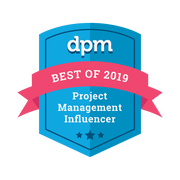We often make the incorrect assumption that the client and executive sponsor know what they need and that they have analyzed their current challenges and opportunities in depth. But whereas the client, or business owner, do know their day-to-day operations better than the project team, they may not be skilled at specifying how their current and future needs can be met by a new product or service. They also may not be able to predict what the positive and negative impacts will be of a major change program and what to do about it.
In some cases the project manager may be fortunate enough to work with executives who know exactly what they need and how the project ties in with corporate strategy. But in other cases the set-up will be entirely different with stakeholders who lack a clear vision of how the project can add value in the short, medium and long term. The PMI support this view as their research shows that up to 60% of projects are not aligned to strategic objectives although such an alignment has the greatest potential to add value to an organization. That’s a staggering amount and the exact reason why project managers – or leaders I should say – need to step up and bridge the gap between strategy and delivery.
In order to do that, project leaders must fully engage the sponsor and stakeholders and help them visualize the end state when all changes have taken place and all benefits have been realized. They must challenge assumptions and ask the right set of questions – including the hard ones. What will make you say in x months that this project was a success? In which ways will this project help the company and the end-user in the short, medium and long term, to be more effective, profitable or achieve strategic objectives? How will the company operate differently as a result of this project?
The most simple and straightforward enquiries are often the most powerful, and the hardest to ask. We sometimes feel that questions that relate to the client’s business, the project idea or the technologies we are planning to use, are too basic to be asked. But if we don’t ask, we won’t be able to understand how to create added value. In the beginning of a project we are surrounded by people who know more than we do, but we have to push ahead until we fully comprehending the context. That’s the only way to establish a solid foundation for delivery.
If you liked this post, you may also like:
Project Leadership - 20 essential tips
Why do projects continue to fail - and what can we do about it?
The world needs your genius and it needs your leadership!
Project Management Coaching
What are the differences between management and leadership?









 RSS Feed
RSS Feed